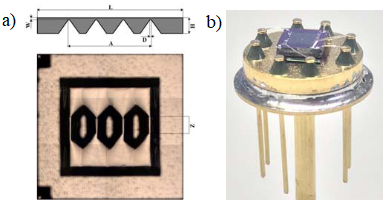Goran S. Ristić1, Stefan D. Ilić1,2, Sandra Veljković1, Aleksandar S. Jevtić1, Strahinja Dimitrijević1, Alberto J. Palma3, Srboljub Stanković4 and Marko S. Andjelković5
Commercial P-Channel Power VDMOSFET as X-ray Dosimeter
Electronics, vol. 11, no. 6, p. 918, Mar. 2022
doi: 10.3390/electronics11060918
1 University of Niš, Serbia
2 University of Belgrade, Serbia
3 University of Granada, Spain
4 “Vinča” Institute of Nuclear Sciences, Belgrade, Serbia
5 IHP, Frankfurt an der Oder, Germany
Abstract: The possibility of using commercial p-channel power vertical double-diffused metal-oxide-semiconductor field-effect transistors (VDMOSFETs) as X-ray sensors is investigated in this case study. In this aspect, the dependence of sensitivity on both the gate voltage and the mean energy for three X-ray beams is examined. The eight gate voltages from 0 to 21 V are applied, and the dependence of the sensitivity on the gate voltage is well fitted using the proposed equation. Regarding X-ray energy, the sensitivity first increases and then decreases as a consequence of the behavior of the mass energy-absorption coefficients and is the largest for RQR8 beam. As the mass energy-absorption coefficients of SiO2 are not found in the literature, the mass energy-absorption coefficients of silicon are used. The behavior of irradiated transistors during annealing at room temperature without gate polarization is also considered.
Fig: Block diagram of experimental setup.
Acknowledgement: This research was funded by the European Union’s Horizon 2020 research and innovation programme under grant agreement No. 857558, and the Ministry of Education, Science, and Technological Development of the Republic of Serbia under the project No. 43011.



